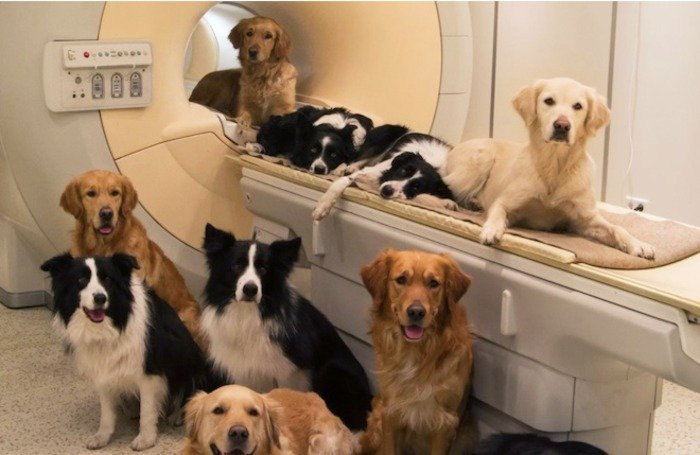Study subjects pose with MRI machine. Credit: Borbala Ferenczy
BUDAPEST, Hungary, Feb. 21 (UPI) -- A study comparing human and dog brain function shows man's best friend has a dedicated voice area in its brain just like its owner, Hungarian scientists say.
Writing in the journal Current Biology, the researchers said the findings suggest voice areas evolved at least 100 million years ago, the age of the last common ancestor of humans and dogs.
It also shows dog brains, like those of people, are sensitive to acoustic cues of emotion, Attila Andics of the MTA-ELTE Comparative Ethology Research Group in Hungary said.
"Dogs and humans share a similar social environment," Andics said. "Our findings suggest that they also use similar brain mechanisms to process social information."
That would help explain humans' unique connection with their best friends in the animal kingdom and gives insight into the behavioral and neural mechanisms that made this alliance so effective for tens of thousands of years, he said.
"This may support the successfulness of vocal communication between the two species," he said.
Andics and his colleagues trained 11 dogs to lay motionless in an MRI brain scanner, then compared their brain activity to human while both the canine and human subjects listened to nearly 200 dog and human sounds.
The brain activity images showed dog and human brains include voice areas in similar locations, the researchers said.
"At last we begin to understand how our best friend is looking at us and navigating in our social environment," Andics said.















